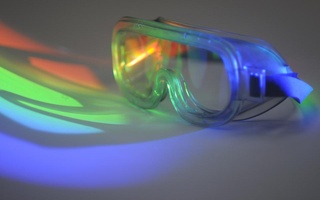Tomi J. Adeyemi ’15 was at Eleganza’s date auction at Cambridge Queen’s Head at 8:40 p.m. on Tuesday night when her eyes started to turn red.
“I thought, ‘Okay, this will fade,’” she recalls.
At the time, she figured she was just tired, or at worst, that she had pink eye. She decided that if she woke up the next morning with “crusty” eyes, she would go to CVS to buy some eye drops.
But at 1 a.m., after she had returned to her suite in Grays Hall to go to sleep, her eyes started hurting.
“I thought, ‘Pink eye doesn’t hurt like this. Something’s wrong.’”
By 4 a.m., experiencing “unbearable” pain and “blurry” vision, Adeyemi and her roommate rushed to Harvard University Health Services urgent care.
Adeyemi and her roommate, Laura J. Cheng ’15, went outside into the windy night, and Adeyemi immediately had to close her eyes because the gusts “felt kind of like sharp glass in my eye.”
When Adeyemi and Cheng walked into Urgent Care at 4:15 a.m., the nurses at the front desk appeared to know why Adeyemi had come and asked if she had been in Life and Physical Sciences A: “Foundational Chemistry and Biology” lab that afternoon. She told them yes. The nurses told her that “this had happened to a lot of kids” and that “it had been happening all night.”
Adeyemi was one of about five students who were exposed to ultraviolet light in LPSA lab on Tuesday while not using the proper eye protection. As a result, they suffered from what Adeyemi was told may have been “thermal retinal burn from UV radiation,” a condition that includes symptoms of eye redness, pain, and blurry vision.
On Tuesday afternoon, Adeyemi, whose eyesight has now recovered fully, had walked into Science Center 117 for her last three-hour LPSA lab of the semester.
The roughly 60 students in the lab would be completing the second half of a two-week lab that used polymerase chain reaction analysis to identify genetically modified foods.
Among their tasks for the day would be an electrophoresis procedure in which they would inject a sample of DNA into gel and then run an electric current across the gel. That process would separate DNA strands of different length. And when viewed under a blue light transilluminator, the strands’ differing lengths would become apparent.
The transilluminator emits UV light, but the printed instructions for the lab made no mention of the need to use safety goggles or to view the gel through a clear protective screen. It is unclear whether verbal instructions regarding safety procedures were issued to the students.
Six LPSA professors, preceptors, and teaching fellows, as well as University spokesperson Nanci Martin, did not respond to repeated requests for comment Thursday night. Head teaching fellow Joshua I. Rosenbloom was reached by phone but declined to comment.
On Wednesday, co-course head Gregory Tucci sent an email to the class saying that anyone who experienced “eye discomfort (irritation, redness, tearing, pain)” should contact UHS, adding that “individuals who viewed their gels while using the plastic safety protective shield or while wearing safety glasses should not be experiencing eye problems.”
Read more in News
In Modern Research, A Botanist’s LegacyRecommended Articles
-
 Harvard Launches Review of Lab Mishap
Harvard Launches Review of Lab Mishap -
Eye Injuries From LPSA Incident Likely MinorStudents who were exposed to ultraviolet radiation in a lab for Life and Physical Sciences A last week can expect temporary burning, irritation, and minor vision loss, but no lasting harmful effects.
-
Legal Experts Weigh In On LPSA IncidentPotential legal action against the University by the families of students injured in a lab for Life and Physical Sciences A last week would likely involve proving the negligence of university employees.
-
 Alexander J. Uruchurtu
Alexander J. Uruchurtu -
Students Call for Beefed Security After Reported RapesAfter the first two stranger rapes in twelve years were reported at Harvard in the span of five days, some undergraduate student leaders are calling for the University to consider tightening its security policies and providing more safety measures for students.
-
 NFL Official Talks Safety
NFL Official Talks Safety













